Pluto's Heart: A Cosmic Valentine in Photos
Pluto Crater Counts
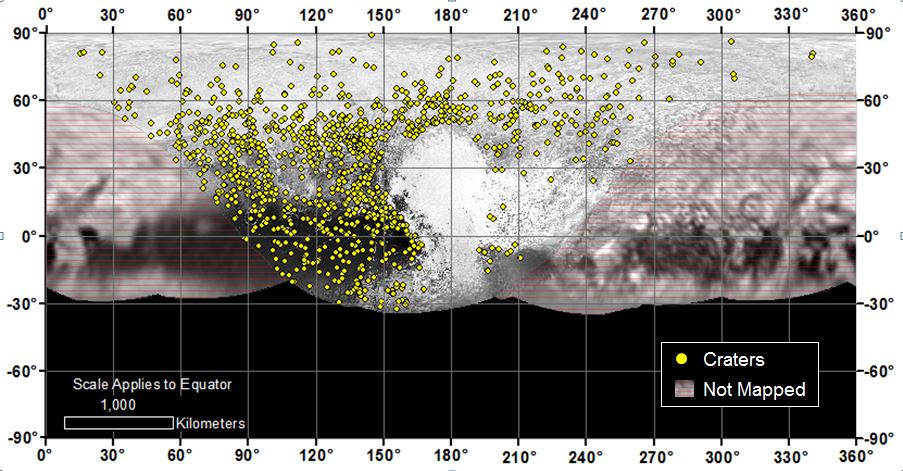
By counting craters across Pluto, scientists determined that some regions of the dwarf planet are as young as 10 million years old while others are nearly as old as the 4.5-billion-year-old solar system. Read the full story.
Surface Patterns on Sputnik Planitia
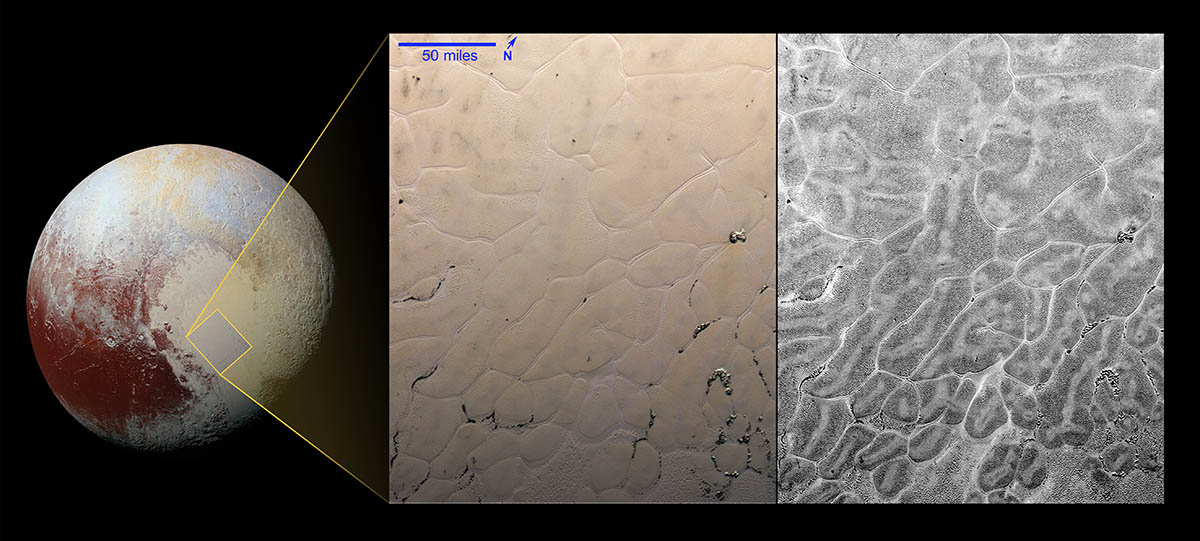
Scientists on NASA’s New Horizons mission have processed images of Sputnik Planitia to bring out intricate patterns in the surface textures of Pluto's glacial plains.
Between Sputnik Planitia and Krun Macula
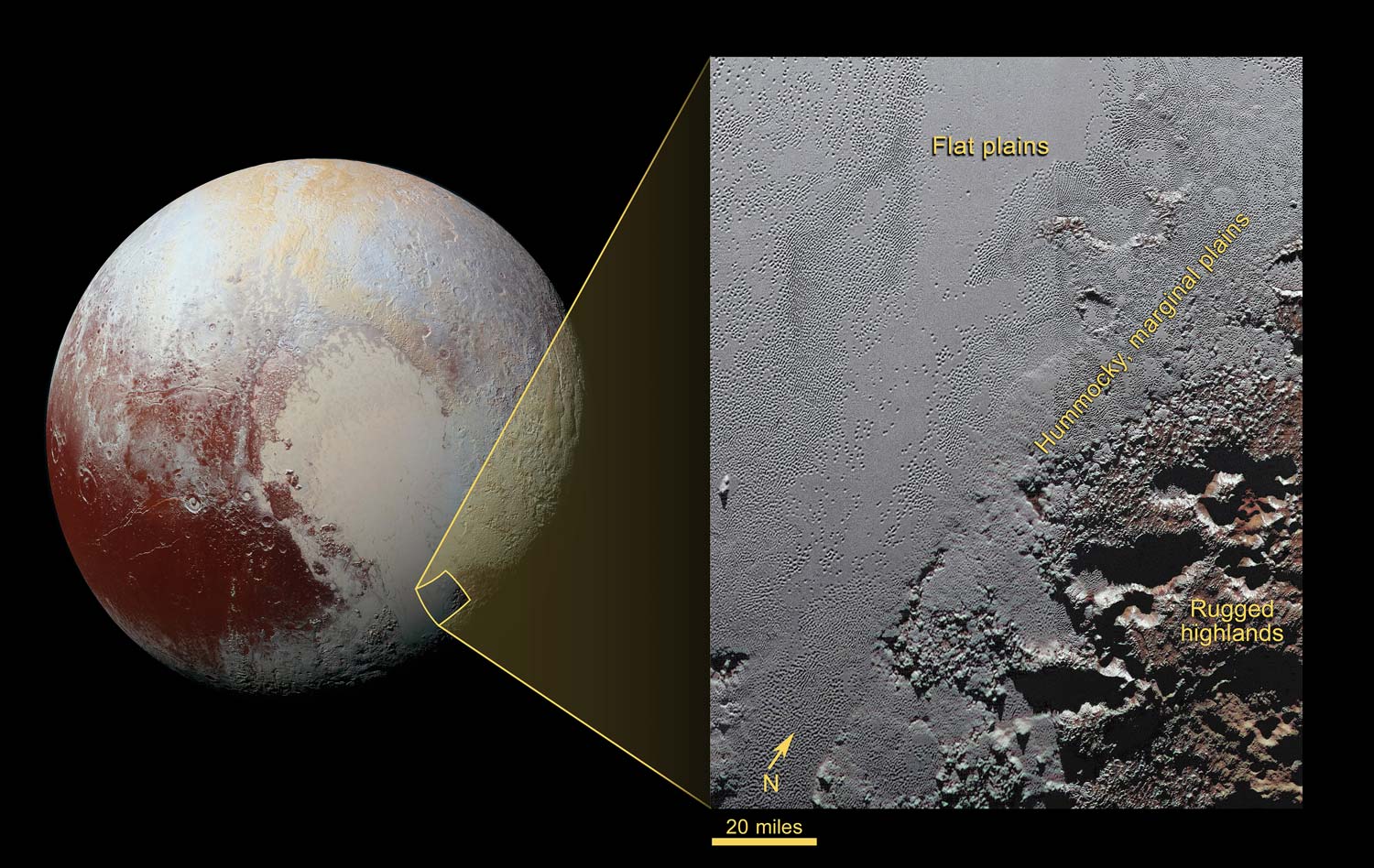
A highly detailed view of Pluto's surface, at the boundary between the icy plain of Sputnik Planitia and the rugged highlands known as Krun Macula. Read the full story.
Close-up of Pluto's surface
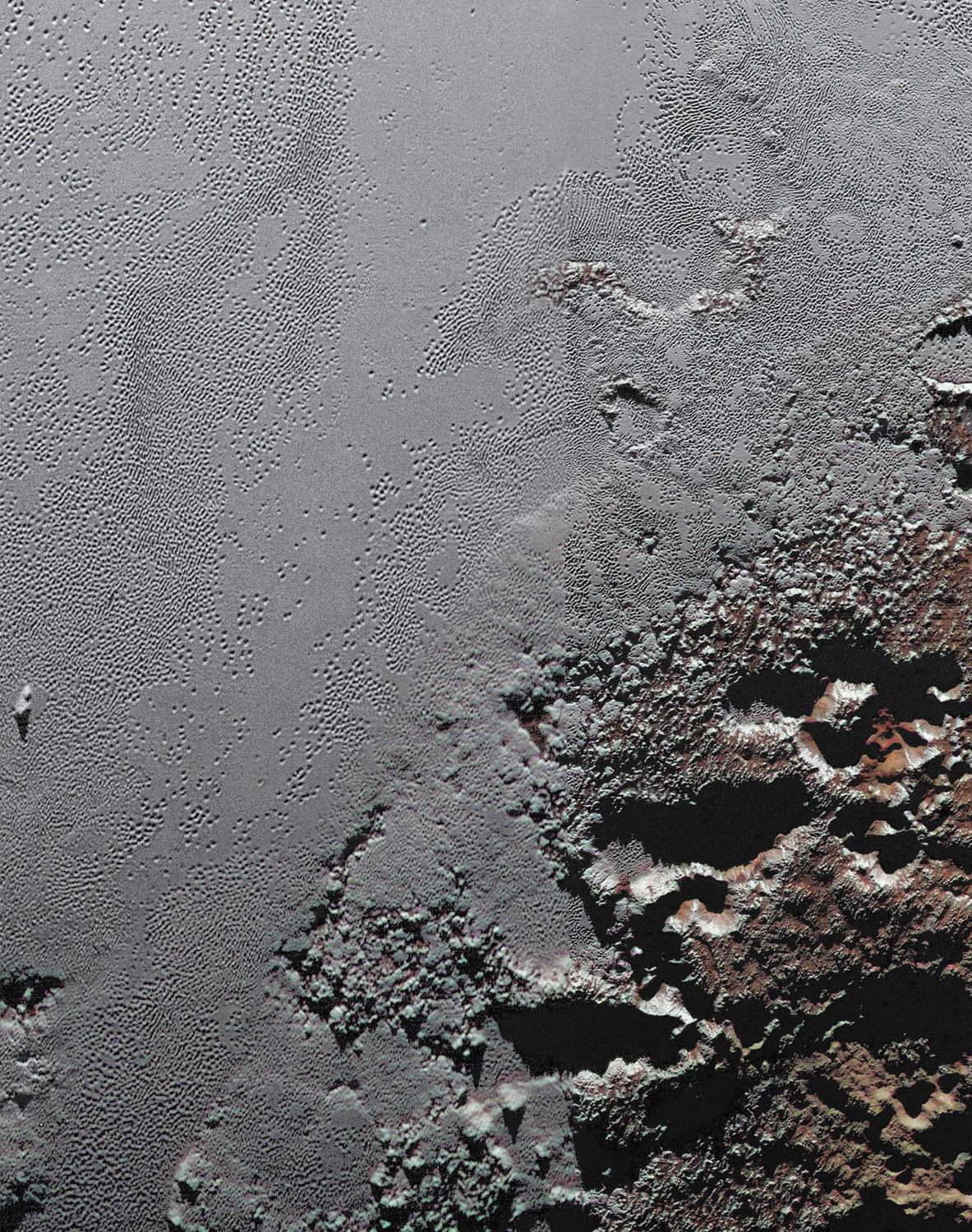
A close-up view of the boundary between the icy plain of Sputnik Planitia and the rugged highlands known as Krun Macula, on the surface of the dwarf planet Pluto. Read the full story.
Surface Features on Pluto
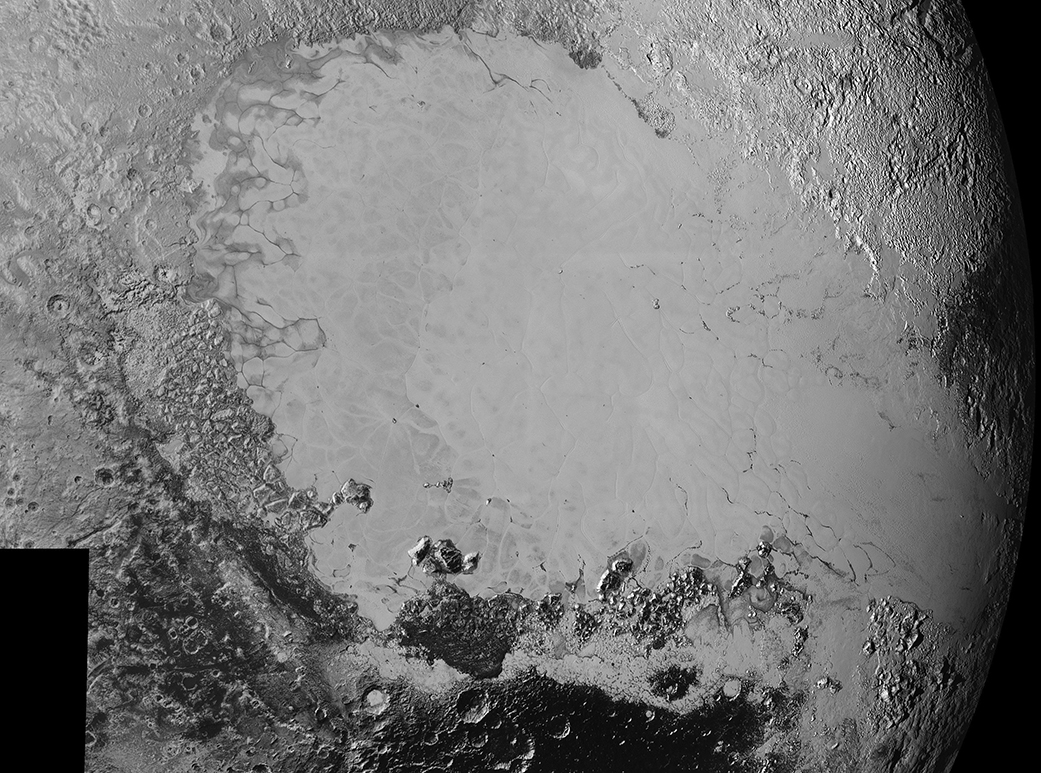
This mosaic of high-resolution Pluto images shows 1,000 miles (1,600 kilometers) of the dwarf planet's surface, as taken from 50,000 miles (80,000 km) away during New Horizons' closest approach.
Vast Ice Plains in Pluto's Heart
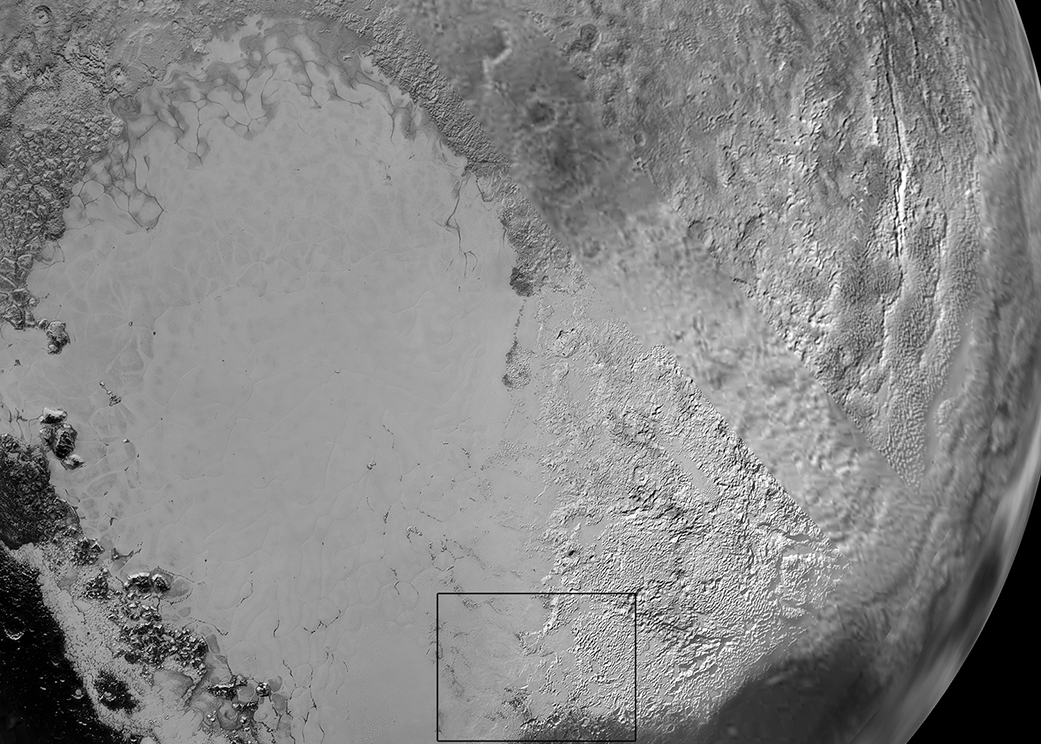
This image, a composite of several photos taken by NASA’s New Horizons probe, shows a vast Pluto ice plain called Sputnik Planum. The box shows the location of other detailed glacier images.
'Tombaugh Regio' on Pluto
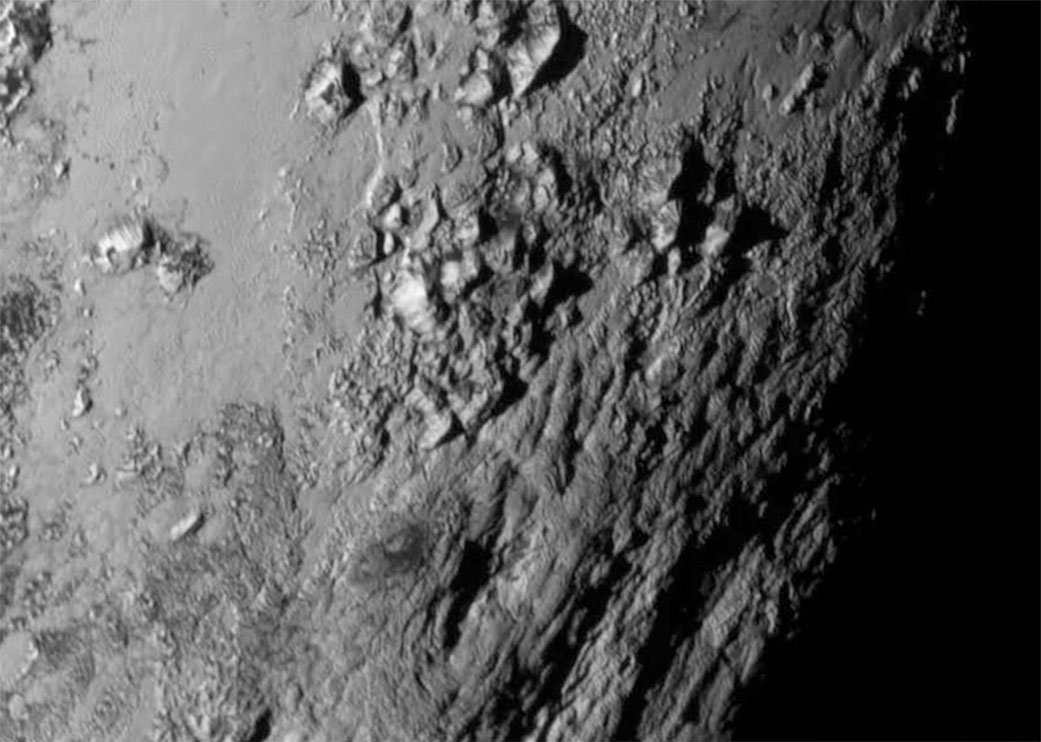
New Horizons' first detailed image of the heart-shaped 'Tombaugh Regio' near Pluto's equator revealed a range of mountains rising as high as 11,000 feet above the icy body.
Get the Space.com Newsletter
Breaking space news, the latest updates on rocket launches, skywatching events and more!
Second Mountain Range on Pluto
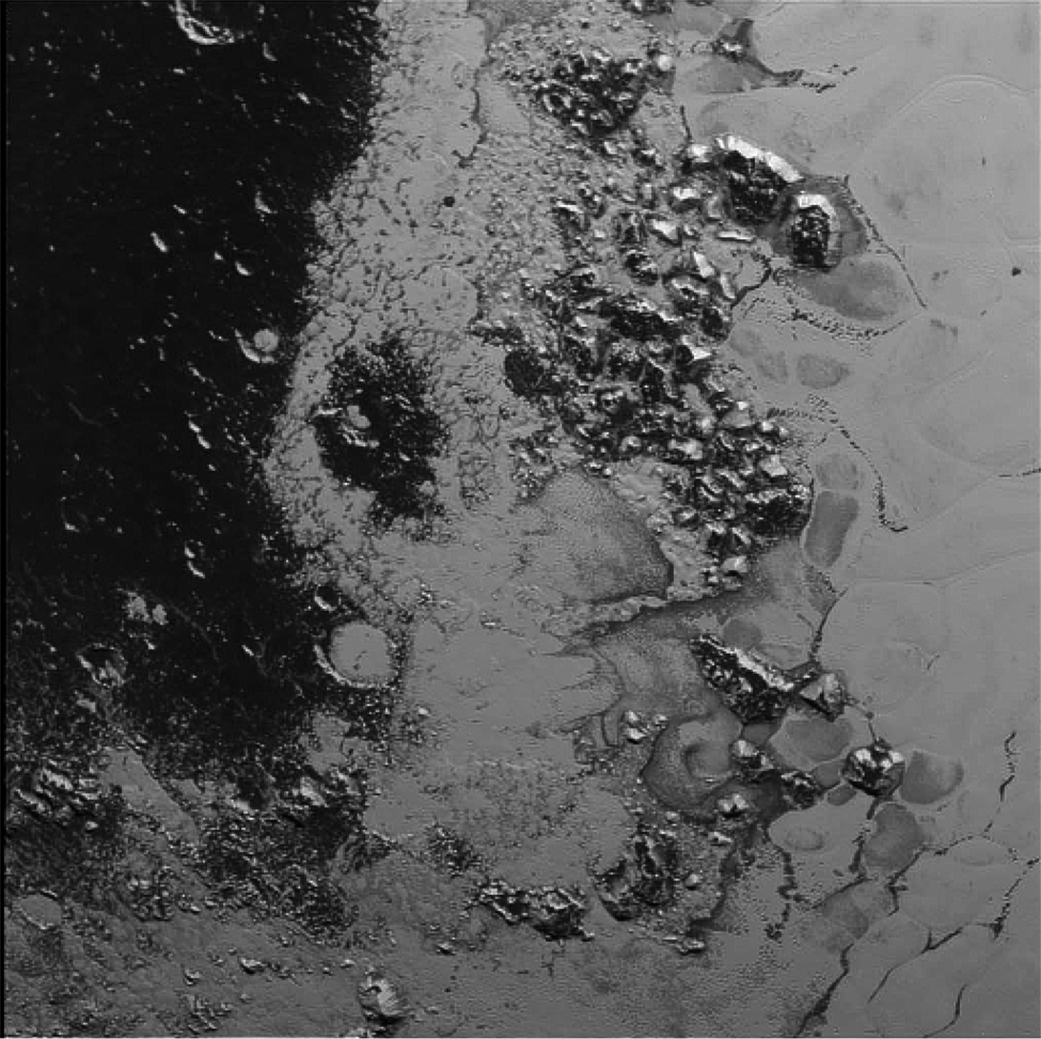
A second mountain range on Pluto that rises from the dwarf planet's heart-shaped region, nicknamed Tombaugh Regio, is seen in this stunning image from NASA's New Horizons spacecraft. NASA unveiled the image on July 21, 2015.
Frozen Plains of Pluto
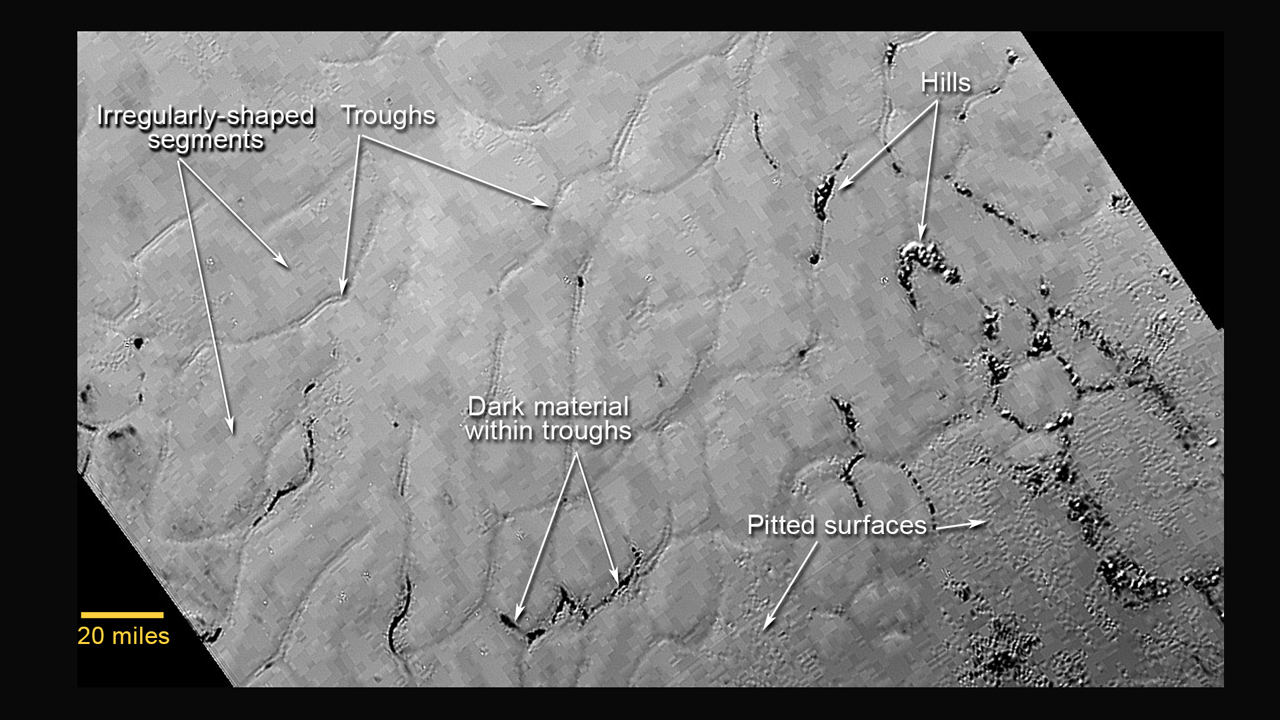
This annotated view of part of Pluto’s Sputnik Planum region shows an array of enigmatic features. The photo was acquired by NASA’s New Horizons probe on July 14, 2015 from a distance of 48,000 miles (77,000 kilometers). Features as small as 0.5 miles (1 km) across are visible. The blocky appearance of some features is due to image compression.
Pluto Terrain of Sputnik Planitia
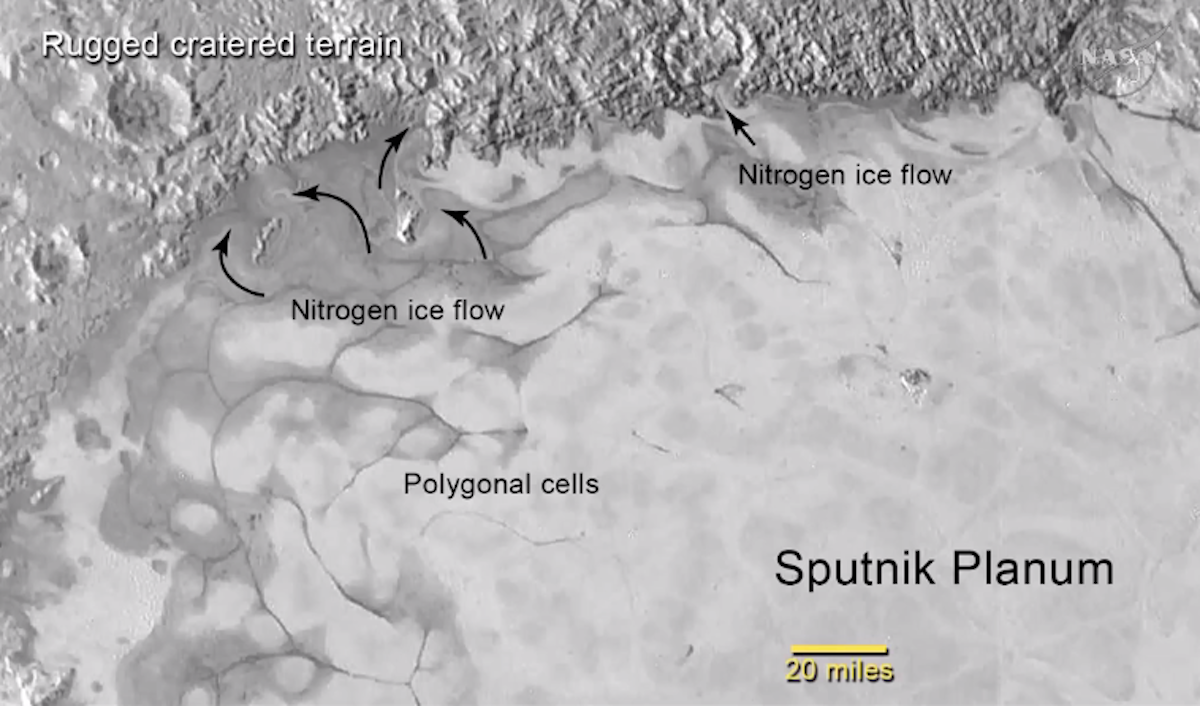
This photo of Pluto shows the northern region of Sputnik Planitia, formerly known as Sputnik Planum, where flows of exotic ices have created swirl-shaped patterns much like glaciers on Earth, scientists say. NASA unveiled this image on July 24, 2015.
Join our Space Forums to keep talking space on the latest missions, night sky and more! And if you have a news tip, correction or comment, let us know at: community@space.com.

Hanneke Weitering is a multimedia journalist in the Pacific Northwest reporting on the future of aviation at FutureFlight.aero and Aviation International News and was previously the Editor for Spaceflight and Astronomy news here at Space.com. As an editor with over 10 years of experience in science journalism she has previously written for Scholastic Classroom Magazines, MedPage Today and The Joint Institute for Computational Sciences at Oak Ridge National Laboratory. After studying physics at the University of Tennessee in her hometown of Knoxville, she earned her graduate degree in Science, Health and Environmental Reporting (SHERP) from New York University. Hanneke joined the Space.com team in 2016 as a staff writer and producer, covering topics including spaceflight and astronomy. She currently lives in Seattle, home of the Space Needle, with her cat and two snakes. In her spare time, Hanneke enjoys exploring the Rocky Mountains, basking in nature and looking for dark skies to gaze at the cosmos.









